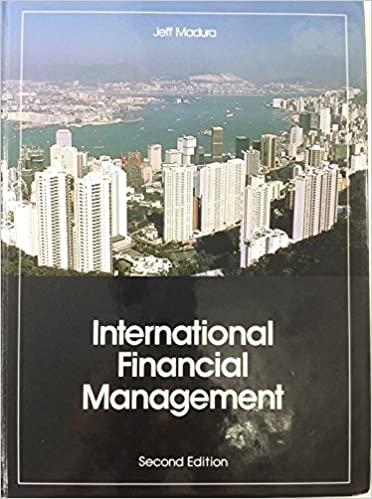Answered step by step
Verified Expert Solution
Question
1 Approved Answer
Aires and Huma, buddies since childhood, both have just had their first child. To finance their kids' tertiary education, they have each just invested in
Aires and Huma, buddies since childhood, both have just had their first child. To finance their kids' tertiary education, they have each just invested in an year fixed coupon bond. The bond has a face value of $ and pays APR semiannual coupons. Given the market condition at the time of purchase, Huma and Aires purchased the bond at par.
Before finalizing their purchase decisions, they tried to seek answers to the following questions that they believed would address their potential concerns about the investment.
a Given the cash flows and risk of the bond in question, how much did AiresHuma pay to buy the bond? Briefly explain.
b If Huma and Aires hold the bonds until maturity, what is the average yearly total rate of return APR if the interest rate remains unchanged for the bond? Briefly explain.
Hint: Instead of thinking about the calculations, focus on what is being asked here.
c Aires has been contemplating the possibility that he may need to sell some units of the bond after one year of holding. Based on his and Huma's analysis, the relevant discount rate of the bond may have risen by percent one year from now and stay at that level until the bond's maturity Should that happen, Aires and Huma would like answers to their investment returns:
i current yield and capital gains yield for one year for Aires
ii holding period yield for one year for Aires, assuming coupons received in first year can be reinvested at the interest rate of APR with semiannually compounding
iii If the interest rate does go up by percent, will Huma's education financing plan be affected? If yes, positively or negatively? Briefly explain.
Working as a senior manager at a fastgrowing technology company, Gold Standard Ltd GST you hold shares of Gold Standard stock via employee stock holding scheme that is currently trading at $ per share. You also have $ invested in another defensive stock, Natural Gas LtdNGL to balance the risk of your portfolio.
The market information on the two stocks are as follows:
Stock Gold Standard: Expected rate of return Standard Deviation
Stock Natural Gas: Expected rate of return Standard Deviation
Correlation Coefficient of Stock Gold Standard with Stock Natural Gas
The probabilities and rate of returns for GTS under different states of the economy are as follows:
State of the Economy.
Boom
Normal Bust
Probability.
Expected rate of return of
Stock Gold Standard
under various states of the economy
a Given that the expected rate of return of GST is calculate its expected return when the state of the economy is "Bust".
b What is the expected return of your portfolio? Hints: Calculate the weight of GST and NGL as your first step.
c What is the standard deviation of your portfolio?

Step by Step Solution
There are 3 Steps involved in it
Step: 1

Get Instant Access to Expert-Tailored Solutions
See step-by-step solutions with expert insights and AI powered tools for academic success
Step: 2

Step: 3

Ace Your Homework with AI
Get the answers you need in no time with our AI-driven, step-by-step assistance
Get Started


